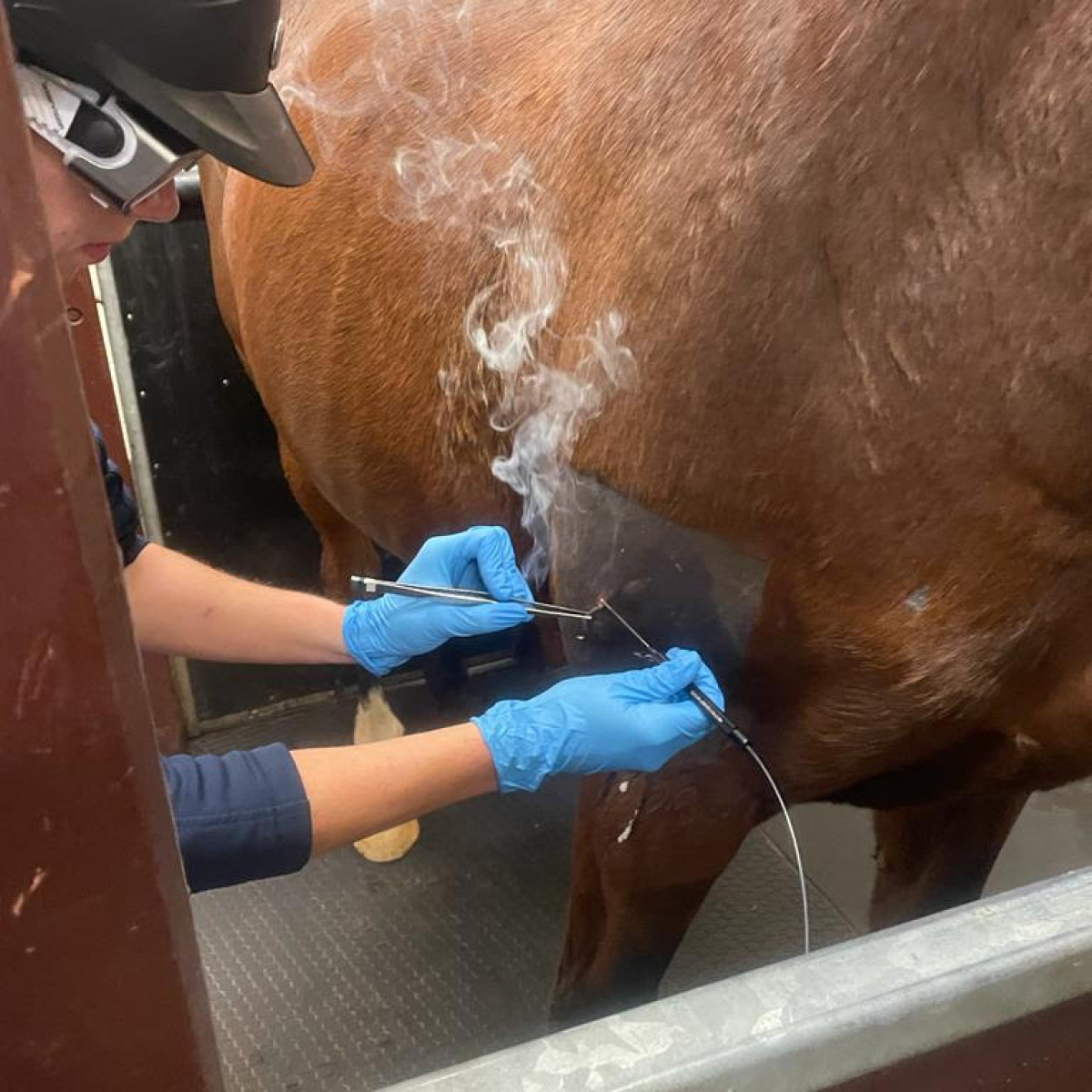The Power of Equine Therapy for Stress And Anxiety, PTSD, and Emotional Recovery
The Power of Equine Therapy for Stress And Anxiety, PTSD, and Emotional Recovery
Blog Article
Evaluating the Effectiveness of Laser Therapy in Horse Therapy for Injury Recovery
The assessment of laser therapy's efficiency in equine injury rehab hinges on multiple aspects, consisting of recuperation time, discomfort mitigation, and tissue regeneration. Vets regularly observe premium end results with laser treatment contrasted to conventional methods, positioning it as a critical element in equine treatment.
Recognizing Laser Therapy
Laser therapy has ended up being a pivotal device in veterinary medicine, especially in the treatment of equine conditions. Known for its non-invasive nature and efficiency, laser treatment includes the application of details wavelengths of light to boost tissue repair work and reduce swelling. This healing modality is increasingly preferred for its capacity to speed up the healing procedure in equines enduring from a variety of musculoskeletal injuries and persistent conditions.
The main mechanism behind laser therapy is its capability to enhance cellular features. When laser light passes through the skin, it is taken in by mitochondria, the giant of cells, which causes increased manufacturing of adenosine triphosphate (ATP) This biochemical energy boost promotes cellular repair work and regrowth. Furthermore, laser therapy promotes vasodilation, boosting blood flow and oxygen delivery to damaged tissues, therefore expediting healing.
In equine medication, laser treatment is specifically valuable for problems such as tendonitis, osteo arthritis, and injury recovery. The technique is lauded for its pain-relieving properties, enabling steeds to reclaim flexibility and function a lot more quickly. Veterinarians also value its marginal side results contrasted to other treatment techniques, making it a reputable and secure choice for equine treatment.

How Laser Treatment Functions

Upon absorption, these photons set off a collection of biochemical modifications, improving mitochondrial function and bring about enhanced adenosine triphosphate (ATP) manufacturing. This surge in ATP speeds up mobile metabolism, promoting cells fixing and regrowth. Furthermore, laser therapy modulates inflammatory reactions by impacting cytokine degrees and reducing oxidative stress and anxiety, therefore reducing discomfort and swelling.
An additional considerable element of laser treatment is its function in improving microcirculation. The treatment advertises vasodilation, boosting blood flow and oxygen shipment to broken tissues (Equine Therapy). This facilitates the removal of cellular particles and supports the spreading of fibroblasts and collagen synthesis, essential for injury healing
Clinical Proof
The efficiency of laser treatment in equine treatment has actually been corroborated through various professional researches, showcasing its therapeutic possible throughout a variety of problems. A number of controlled trials and empirical studies have recorded significant improvements in cells repair, discomfort decrease, and general recovery timelines. More about the author A study carried out by Turner et al. (2012) showed that steeds treated with low-level laser therapy (LLLT) for tendon injuries displayed sped up recovery contrasted to those obtaining standard treatments. The research study highlighted a significant decrease in swelling and boosted collagen formation.
In a similar way, research by Johnson and coworkers (2015) concentrated on equine muscle mass injuries, exposing that laser therapy substantially expedited muscular tissue fiber regrowth and minimized muscular tissue stiffness. These searchings for were affirmed by histological evaluations revealing enhanced muscle tissue company. Professional evaluations have actually shown that laser therapy can alleviate chronic problems such as osteoarthritis. A research study by Smith et al. (2018) reported that equines with osteoarthritic joints experienced remarkable pain alleviation and increased series of motion complying with a regimen of laser treatment sessions.
Veterinarian Insights

Vets also value the flexibility of laser treatment. It can be utilized for a wide variety of conditions, from superficial wounds to much deeper bone and joint injuries. Dr. Emily Brown highlights its energy in treating problems like tendonitis and osteo arthritis, where traditional treatments commonly drop short. She points out that laser therapy can be customized to the specific needs of each equine, guaranteeing ideal outcomes.
Additionally, veterinarians value the ability to integrate laser treatment with other treatment techniques. This multimodal method can boost general treatment effectiveness, giving an extensive service for equine rehabilitation. Such endorsements from experienced experts underscore the expanding acceptance and application of laser treatment in equine medicine.
Practical Factors To Consider
A key element of executing laser treatment in equine treatment involves understanding the practical factors to consider that guarantee its efficacy and safety. Firstly, it is essential to choose the appropriate laser gadget, as numerous kinds differ in wavelength, power, and infiltration deepness. Equine Therapy. Veterinarians must be well-versed in these specifications to customize treatment protocols properly to each injury kind
Furthermore, the regularity and duration of laser treatment sessions require careful preparation to click here for info make best use of healing benefits while lessening any type of potential adverse results. Regular tracking of the steed's action to therapy can assist necessary adjustments in the therapy regimen. Developing a secure and regulated setting during therapies is additionally important to protect against unintentional direct exposure to laser discharges, which might hurt both the equine and the handler.
Educating and qualification of workers administering laser treatment are paramount to make certain proper method and to maintain security standards. Additionally, preserving exact records of each session, including laser setups and observed outcomes, is essential for reviewing the total effectiveness of the therapy and for making data-driven check my reference choices.
Conclusion
Laser treatment has actually emerged as a reliable method in equine injury rehab, supplying substantial advantages in recovery time, pain alleviation, and cells healing. For optimum results, constant monitoring and customized therapy procedures stay essential in leveraging the full possibility of laser therapy in equine treatment.
Report this page